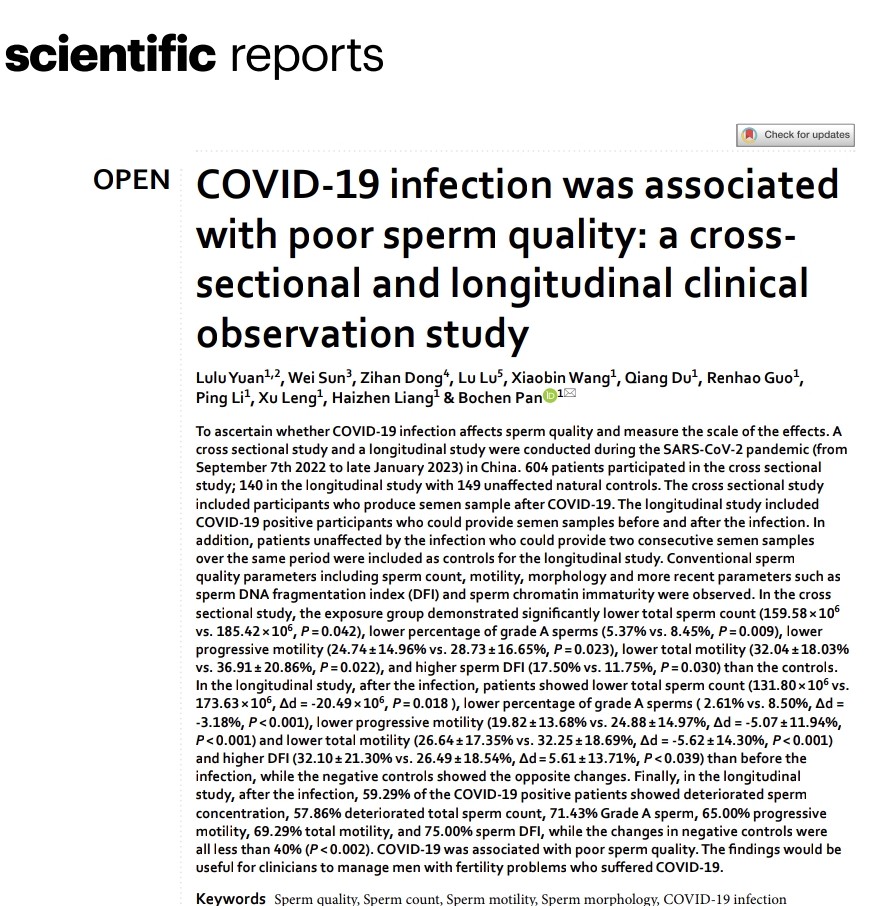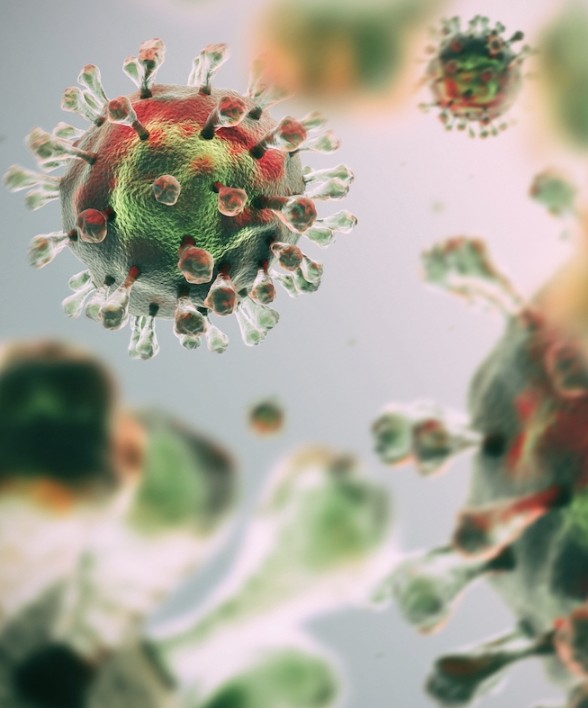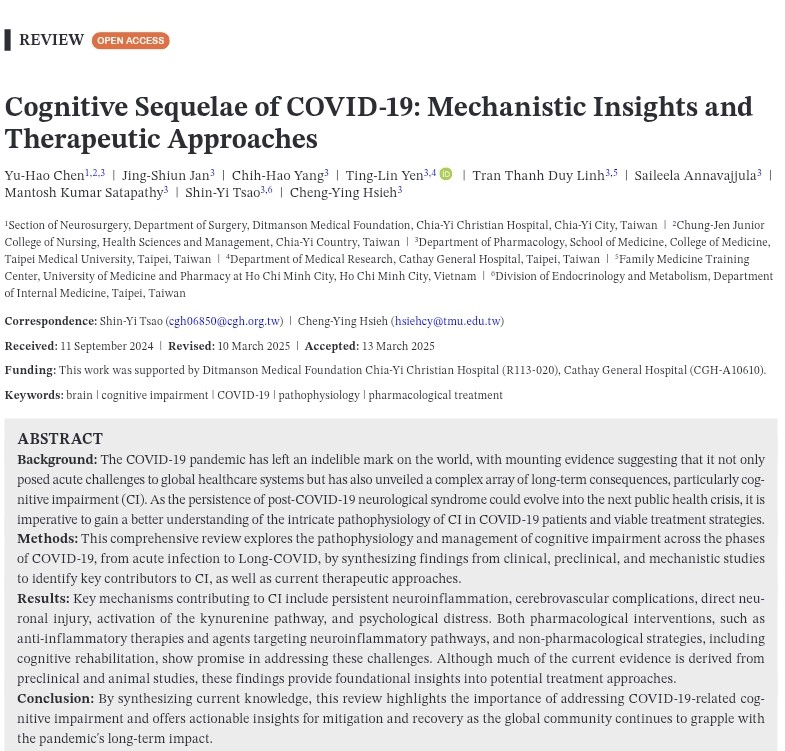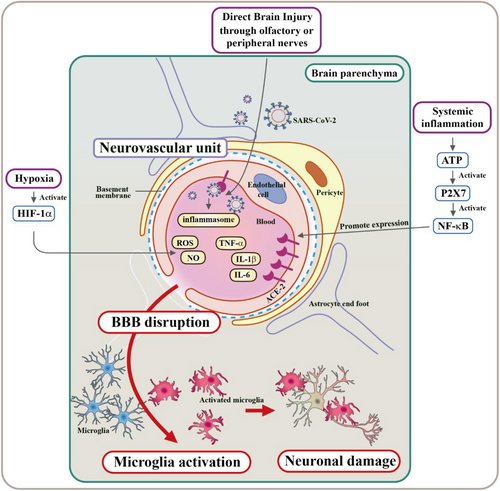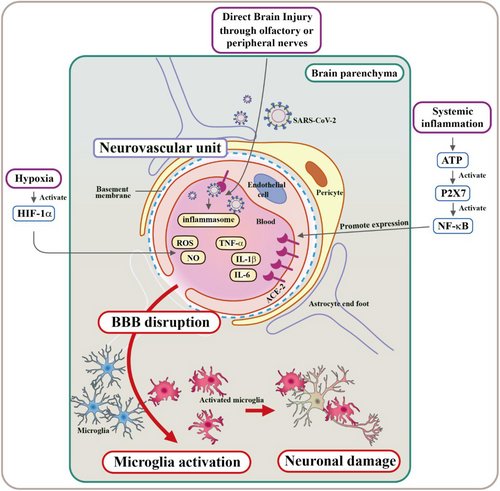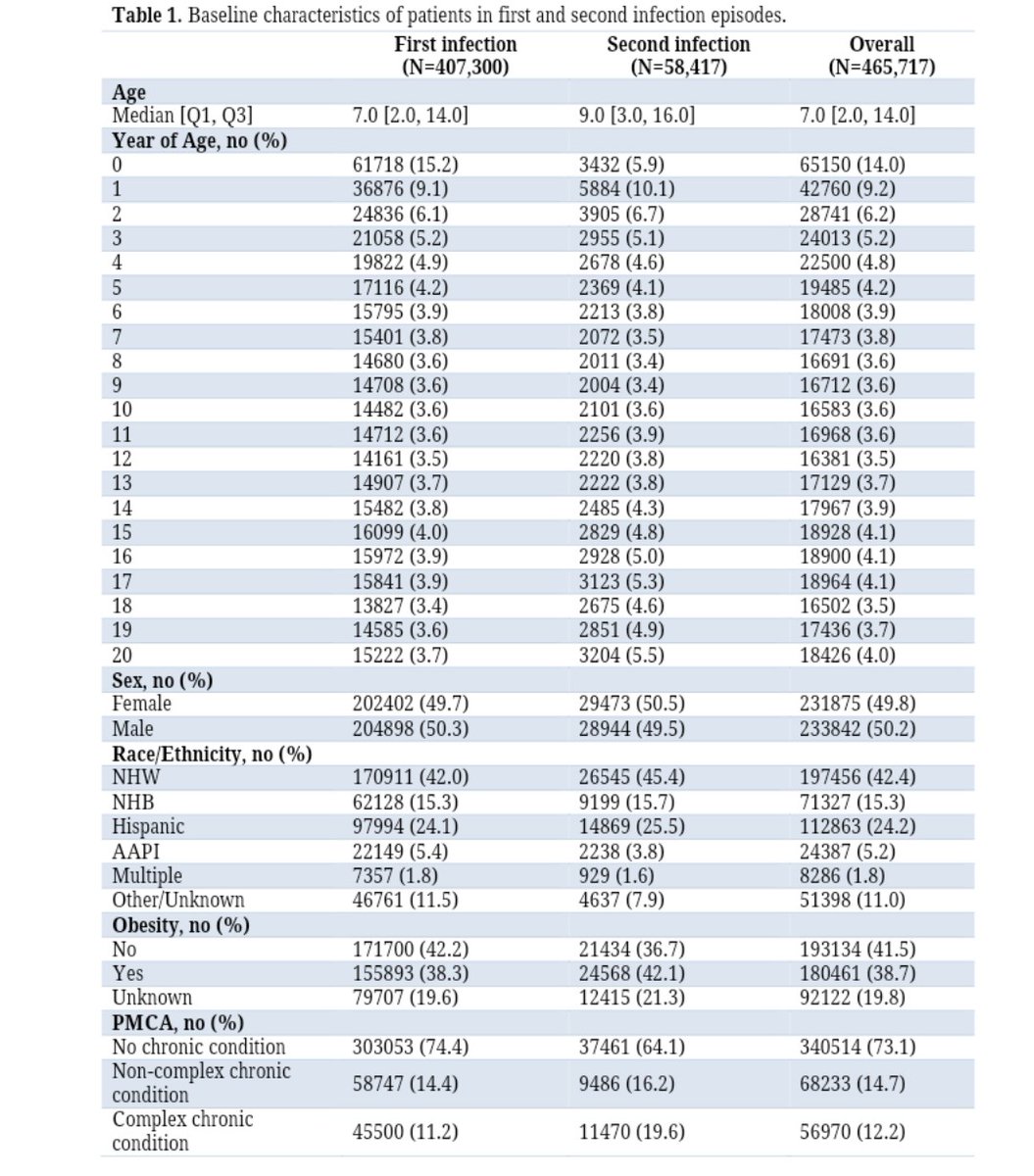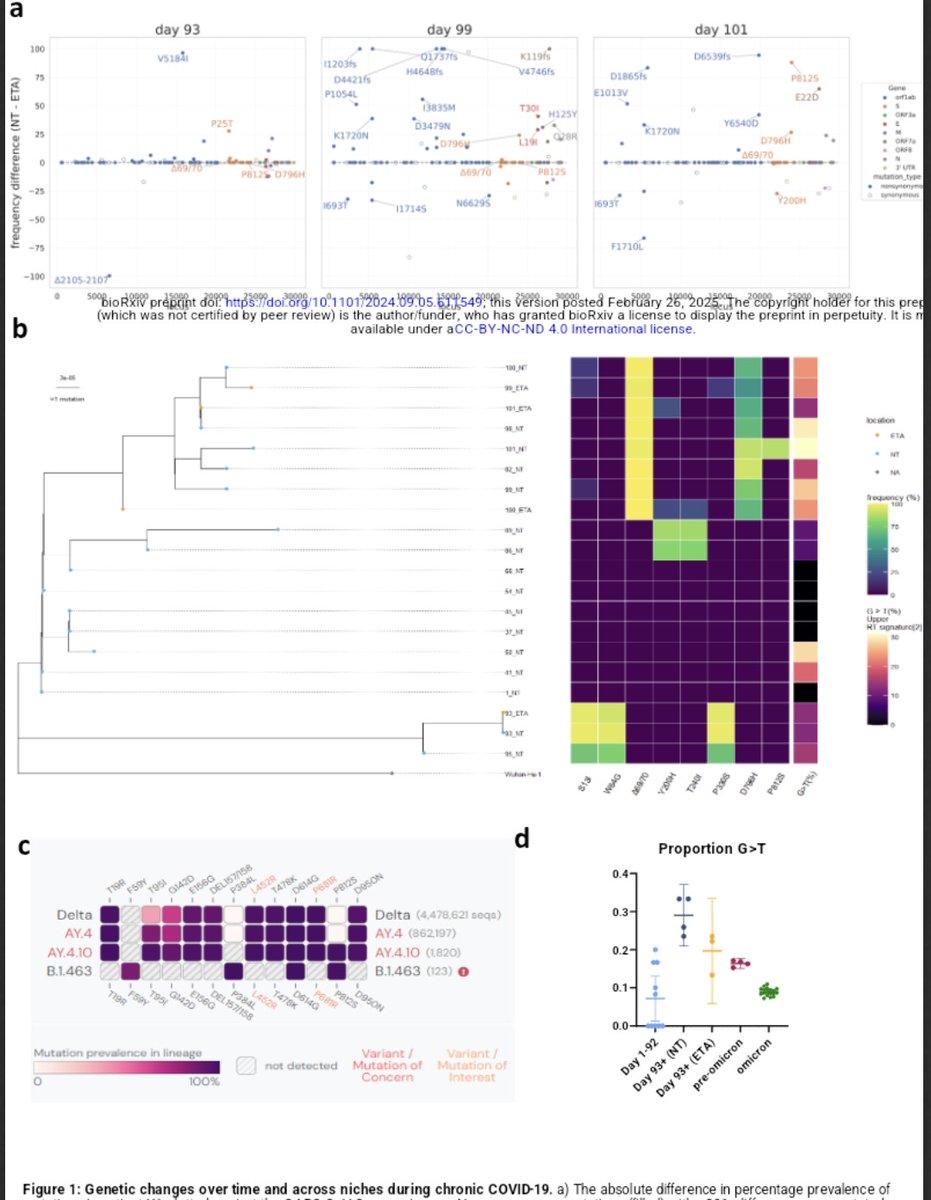𝗥𝗼𝗹𝗲 𝗼𝗳 𝗜𝗡𝗙𝗟𝗔𝗠𝗠𝗔𝗧𝗜𝗢𝗡 𝗶𝗻 𝘁𝗵𝗲 𝗗𝗘𝗩𝗘𝗟𝗢𝗣𝗠𝗘𝗡𝗧 𝗼𝗳 𝗖𝗢𝗩𝗜𝗗-19 𝘁𝗼 𝗣𝗔𝗥𝗞𝗜𝗡𝗦𝗢𝗡 ’𝘀 𝗗𝗜𝗦𝗘𝗔𝗦𝗘
𝘙𝘦𝘢𝘭𝘭𝘺 𝘢 𝘬𝘦𝘺 𝘴𝘵𝘶𝘥𝘺 !
dovepress.com/role-of-inflam…

𝘙𝘦𝘢𝘭𝘭𝘺 𝘢 𝘬𝘦𝘺 𝘴𝘵𝘶𝘥𝘺 !
dovepress.com/role-of-inflam…

2) COVID-19 and Parkinson's disease (PD) may be linked through shared mechanisms like neuroinflammation, oxidative stress, autophagy dysregulation, and ACE2 downregulation. SARS-CoV-2 infection could trigger pathways involved in PD development. 

3) Analysis of gene expression data identified differentially expressed genes (DEGs) between PD/COVID-19 and controls. Pathway analysis showed genes were involved in processes like inflammation and immune response. 

4) Ibuprofen may help alleviate PD and COVID-19 by inhibiting the NF-κB signaling pathway through DEGs like RELA. This pathway is activated in both diseases and involved in inflammation. 

5) ACE2 plays a role in PD pathology based on a mouse model with ACE2 knockout. These mice showed worse PD symptoms, more neuronal loss, and increased inflammation markers. ACE2 is expressed in brain areas implicated in PD. 

6) SARS-CoV-2 entry involves binding to ACE2 receptor. Downregulating ACE2 during COVID-19 could impact pathways involved in both diseases and exacerbate symptoms 

7) Inflammation, oxidative stress, autophagy and mitochondrial dysfunction are shared mechanisms that may amplify adverse effects when PD and COVID-19 interact. Further research is needed to validate models of this interaction. 

8) In summary, the paper investigates potential links between COVID-19 infection and increased PD risk or severity based on overlapping molecular pathways, and identifies ACE2 and NF-κB inhibition as potential targets for further study.
Thanks for reading 🙏
Thanks for reading 🙏

• • •
Missing some Tweet in this thread? You can try to
force a refresh


